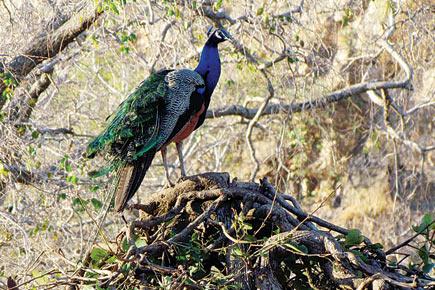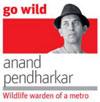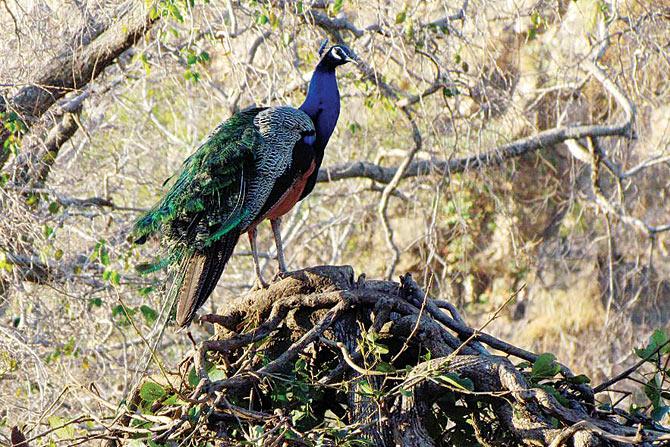On a recent full moon night, I had the good fortune of visiting the famous White Rann, in the Greater Rann of Kachchh (Kutch), Gujarat.

 On a recent full moon night, I had the good fortune of visiting the famous White Rann, in the Greater Rann of Kachchh (Kutch), Gujarat. It is an utterly desolate landscape composed of salt formed by the drying up of saline marshes of the Gulf of Kachchh, which shares its border with Pakistan. The late evening moon cast odd shadows on the stark heaps of white. Thanks to the white background and bright moonlight, my camera’s autometering had to be adjusted, which took quite some time. The end result were interesting pictures intermittently scalloped with black. During the dry phase, very few creatures, plant and animal, are known to inhabit this unique desert habitat. The dryness caused by the hygroscopic salt and the light reflected from the white substrate makes the open landscape burning hot by day and freezing cold during the night. Even the thought of wandering deep into this vast expanse was scary.
On a recent full moon night, I had the good fortune of visiting the famous White Rann, in the Greater Rann of Kachchh (Kutch), Gujarat. It is an utterly desolate landscape composed of salt formed by the drying up of saline marshes of the Gulf of Kachchh, which shares its border with Pakistan. The late evening moon cast odd shadows on the stark heaps of white. Thanks to the white background and bright moonlight, my camera’s autometering had to be adjusted, which took quite some time. The end result were interesting pictures intermittently scalloped with black. During the dry phase, very few creatures, plant and animal, are known to inhabit this unique desert habitat. The dryness caused by the hygroscopic salt and the light reflected from the white substrate makes the open landscape burning hot by day and freezing cold during the night. Even the thought of wandering deep into this vast expanse was scary.

A peacock at Sanjay Gandhi National Park
ADVERTISEMENT
I spent a week travelling to various regions of the landscape with my friend Ovee Thorat, who is studying the changing human-nature interactions in the region. Here, I also volunteered some help to Anisha, a Master’s student studying a small rodent called Indian Gerbil. The Banni Grasslands, which was my base-camp for a week, is a mosaic of seasonal wetlands, greener grassy and halophytic (salt-tolerant) vegetation and patches of the White Rann. An exotic introduced tree, the Mesquite or Prosopis juliflora, used for making charcoal has encroached and choked over 50 per cent of this landscape, causing a negative impact on its indigenous flora and fauna. The Maldharis (pastoralists) here strongly regulate the changes and development projects in the Banni region. While travelling here, my mind was constantly going back to the lush greenery of the Sanjay Gandhi National Park (SGNP) and our own coastal mangroves. It was natural to compare the two regions.
In the Western Ghats, there are many creatures which unknowingly catch our attention and their position remains foremost even when travelling or living in suburban Mumbai. I realised this when we visited many traditional artisan homes locally called Bhungas. These are round unbaked, mud-brick and thatch-covered houses, elaborately painted with soil colours. The foremost motif on Kutchi clothes, wall paintings as well as wood-work was my personal favourite, our national bird, the Indian Peafowl. The elegance, poise and control of this pheasant over its elaborate tail feathers is awe-inspiring.
My earliest memory of peacocks goes back to my first school picnic to the Vihar Lake and Aarey Milk Colony. A peacock had run across the road and suddenly flew to escape our bus.
Its firm strides, upright blue neck and the trailing train of green, blue and brown feathers was beautiful. I still remember the shock and amazement on our faces. We had been blessed with the magic of nature, but it affected everyone differently. As for me, for the next year or two, every drawing, painting or doodle had the unnecessary inclusion of a peacock design. This was amusing for my family but infuriating for exacting art teachers, who expected me to stick to the theme.
In today’s concretised existence, my heart yearns for the dancing peacocks, their alarm calls and harsh cackles emitted when disturbed or shocked by a carnivore or human. My friends from Ahmedabad and Jodhpur are not amused with my penchant for peacocks, as they spend sleepless nights due to their endless screams. I satiate my desire of watching them by frequenting the hills of Kanheri and Yeour in SGNP, the neighbouring Tungareshwar Wildlife Sanctuary and the Aarey Forests. Peafowls are synonymous with the frenzied courtship dance of the male to his harem of females, during the monsoons. However, I have witnessed a young male fan its train feathers to look larger than the troop of menacing macaques, who had circled it for a hunt.
The inaccessible Mayor’s Bungalow, IIT & NITIE Campuses in Powai, the Mulund Hills, Malabar Hill and Priyadarshani Park are a few locations in Mumbai where peacocks are easily sighted. Extensive destruction of Mumbai’s urban greens and encroachments on the SGNP boundaries has rendered the Peafowls homeless.
Just like the Maldharis of Banni, rather than just wishing each other Happy Republic day, we Mumbaikars must take onus of protecting our National Bird, if we wish to display our patriotism.
Write in to Anand Pendharkar at sproutsenvttrust@gmail.com
 Subscribe today by clicking the link and stay updated with the latest news!" Click here!
Subscribe today by clicking the link and stay updated with the latest news!" Click here!







